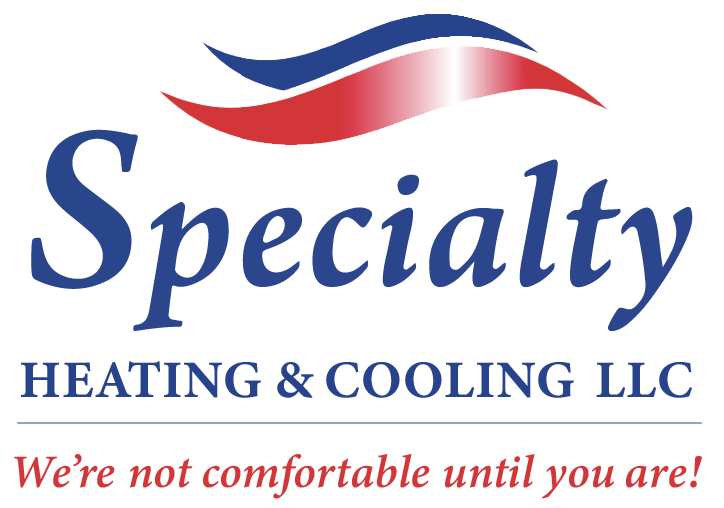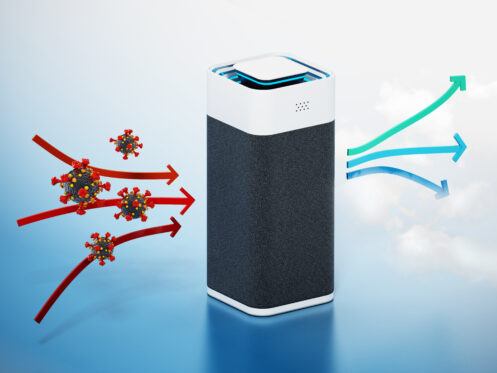As autumn descends, indoor air quality becomes a big concern. Chilled air prompts closed windows and increased indoor activities, creating unique challenges. From lurking bacteria in HVAC systems to the unexpected consequences of household cleaning, understanding common indoor air quality issues is crucial to maintaining a healthy living environment during the fall months.
1. Mold and Mildew Growth
During the fall season, the blend of cooler temperatures with occasional dampness offers an inviting setting for mold and mildew to flourish. These unsightly patches on walls and ceilings are more than just an aesthetic concern. They release microscopic spores into the indoor atmosphere. When inhaled, these spores can trigger allergic reactions, from sneezing to more severe respiratory complications. In addition, the persistent musty scent associated with mold growth can make living spaces less pleasant and potentially harm household items by promoting decay.
2. Dust Mites
As the crisp autumn air sets in, people instinctively seek warmth. Heaters come to life after months of dormancy, stirring up the settled dust in homes. This is a welcoming time for dust mites. They revel in the warmth, multiplying rapidly in our bedding, upholstery, and carpets. The real concern arises from their waste, which becomes airborne and easily inhaled. For many, this can be a source of allergic reactions, manifesting in symptoms like itching, sneezing, and even asthma attacks in more vulnerable individuals.
3. Inadequate Ventilation
In autumn, households keep their windows and doors tightly closed to ward off the chill. However, this common practice can inadvertently trap stale indoor air, creating an environment where pollutants thrive. Without the regular flow of outdoor air, household pollutants like dust, dander, and other allergens accumulate. Additionally, the stagnant air holds onto odors, making living spaces feel less fresh. The potential for increased carbon dioxide levels and decreased oxygen can also arise, which can contribute to feelings of stuffiness and fatigue. Prioritizing occasional ventilation, even in cooler months, ensures a healthier indoor environment.
4. Combustion Pollutants
The cozy warmth of a lit fireplace or wood-burning stove is a key feature of autumn evenings. However, this comforting ambiance carries hidden dangers. Devices that rely on combustion, including space heaters, produce pollutants such as carbon monoxide (CO) and nitrogen dioxide (NO2). Carbon monoxide, an odorless, colorless gas, can lead to symptoms ranging from headaches to more severe conditions like unconsciousness. Nitrogen dioxide, on the other hand, can irritate the respiratory system, especially in those with asthma. If these devices aren’t correctly vented or if rooms aren’t adequately aired out, these pollutants can quickly reach harmful levels, posing severe health risks.
5. VOCs from Fresh Paint
Autumn often becomes a favored time for homeowners to embark on indoor painting tasks, aiming to refresh or redesign their living spaces for the long winter ahead. While the final result can be aesthetically pleasing, the process introduces a less visible concern: the release of volatile organic compounds, or VOCs. These gaseous chemicals are found in most paint formulations. Prolonged exposure or inadequate ventilation can allow these VOCs to accumulate indoors. Symptoms from inhaling VOCs can range from mild headaches or dizziness to more severe respiratory issues. Ensuring proper ventilation and using low-VOC paints can help mitigate the risk.
6. Pet Dander Accumulation
When temperatures drop, our furry companions tend to stay indoors more frequently. While their presence brings comfort, it also unintentionally increases the concentration of pet dander in our homes. Pet dander consists of tiny flecks of skin shed by cats, dogs, and other animals with fur or feathers. For many, especially those with allergies or asthma, this dander can act as a potent allergen. Prolonged exposure can lead to sneezing, watery eyes, and even respiratory distress. Regular cleaning, grooming of pets, and using air purifiers can help manage indoor dander levels.
7. Pollen Infiltration
Autumn is a season marked by falling leaves and changing colors. However, this beauty often masks a hidden intruder: pollen. Many trees, such as oaks, maples, and pines, release their pollen during the fall or even winter. This pollen can easily infiltrate our homes, especially when we enjoy the crisp fall air and open our windows. Even the briefest exposure can lead to pollen settling on surfaces, embedding in carpets, and floating in the air. For individuals with sensitivities, this invasion can mean a season filled with sneezing, watery eyes, and exacerbated asthma symptoms.
8. Infrequent Filter Changes
Our homes are equipped with HVAC systems designed to maintain a comfortable temperature and promote air circulation. Central to these systems are filters that trap dirt, dust, and various allergens. As time progresses, these filters can become saturated, leading to a decline in their effectiveness. When homeowners neglect to change these filters regularly, especially in the transition to colder months, it results in the circulation of polluted air. Not only does this decrease the system’s efficiency, leading to increased energy costs, but it also means that residents are constantly breathing in potentially harmful particulates. This underscores the importance of regular filter maintenance.
9. Pesticide Residue
During autumn, the dip in temperatures causes an influx of pests seeking refuge in our homes. This often results in homeowners turning to pesticides as a countermeasure. While these products are effective in controlling unwanted critters, they have a downside. The chemicals in many pesticides linger, embedding themselves into carpets, walls, and furniture. Over time, these toxic residues get released into the air. Breathing this contaminated air can lead to several health concerns, especially for vulnerable groups like children and the elderly. As a result, while pesticides address one issue, they might inadvertently contribute to a bigger problem, which is compromised indoor air quality.
10. Dry Air
The chill of the fall season brings with it the need for indoor heating. Heaters, especially central heating systems, pull moisture out of the air, leading to a significant decrease in indoor humidity levels. This lack of moisture can have a host of negative effects on our health and comfort. Dry air can cause our skin to become parched and our eyes to feel irritated. It can dry out the mucous membranes in our respiratory tract, making us more susceptible to infections. People with respiratory conditions might experience heightened symptoms in such environments. Furthermore, dry air can even damage wooden furniture, emphasizing the importance of maintaining optimal humidity.
11. Bacterial Growth
Bacteria find the internal nooks and crannies of HVAC systems to be inviting habitats, particularly when regular maintenance is neglected. Over time, these spaces collect dust, moisture, and other residues, which make them prime breeding grounds. Once the HVAC system is activated, it doesn’t merely circulate air; it disperses these bacterial communities throughout every room. Residents may unknowingly inhale these harmful microbes, potentially leading to various health complications. The implications are especially concerning for those with weakened immune systems or pre-existing respiratory conditions, emphasizing the need for consistent HVAC cleaning and maintenance.
12. Household Cleaners
Autumn prompts many households to engage in deep cleaning to prepare for the holidays. Yet, the very products meant to sanitize and freshen our homes can be double-edged swords. A vast array of these cleaning agents contain potent chemicals that emit noxious fumes. In spaces without ample ventilation, these fumes don’t simply dissipate. Instead, they linger, degrading the purity of the indoor air. Over time, repeated exposure to these airborne chemicals can manifest in respiratory issues, skin irritations, and other health challenges. It’s vital to be informed about the products we use and to ensure proper room ventilation.
Contact Us Today!
At Specialty Heating & Cooling LLC in Portland, Oregon, we provide air filters, duct cleaning, and duct sealing for your home. Our well-skilled team also provides cooling, heating, and mini split heat pumps for homes in the area. Contact Specialty Heating & Cooling LLC for more information today.


